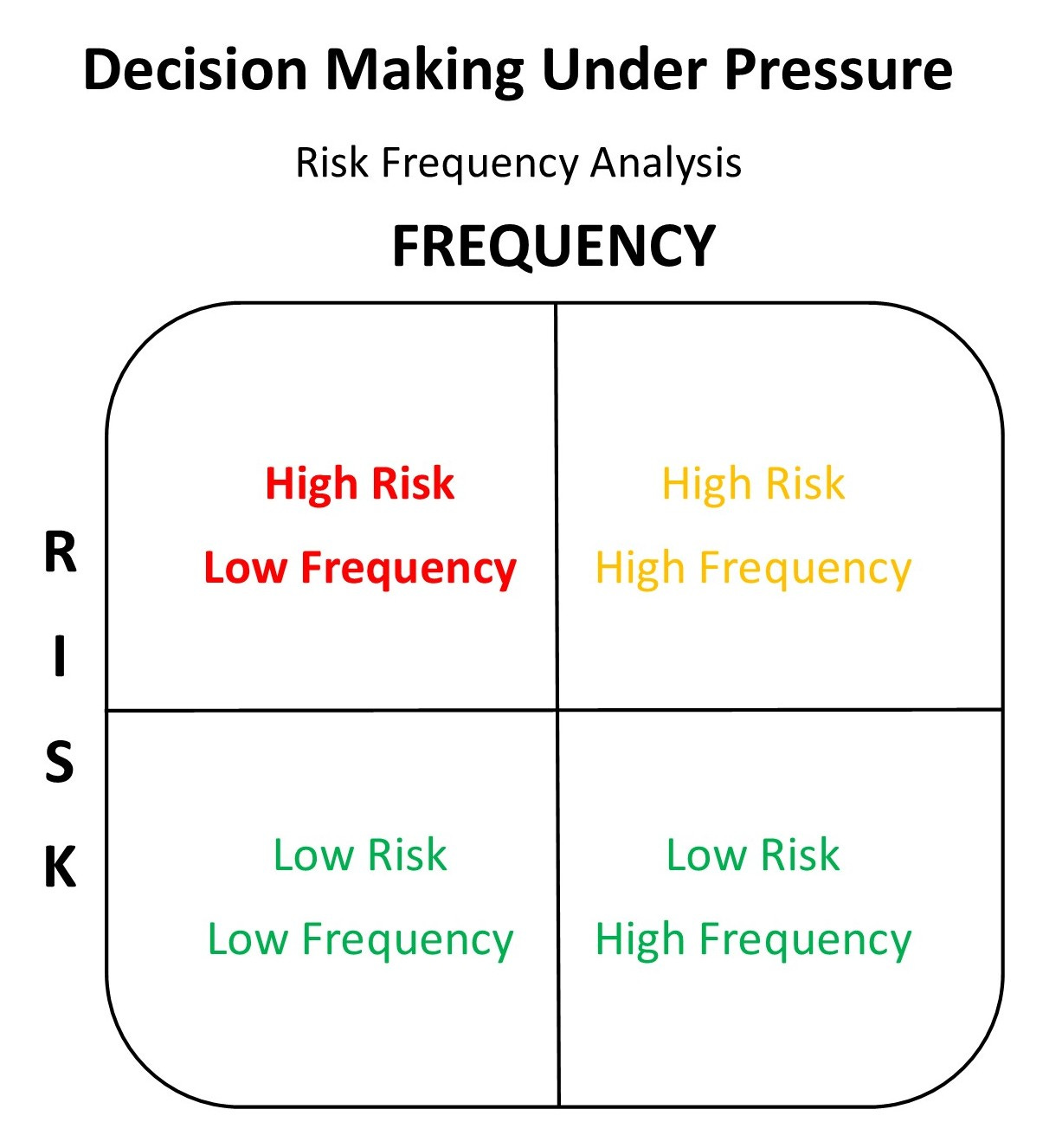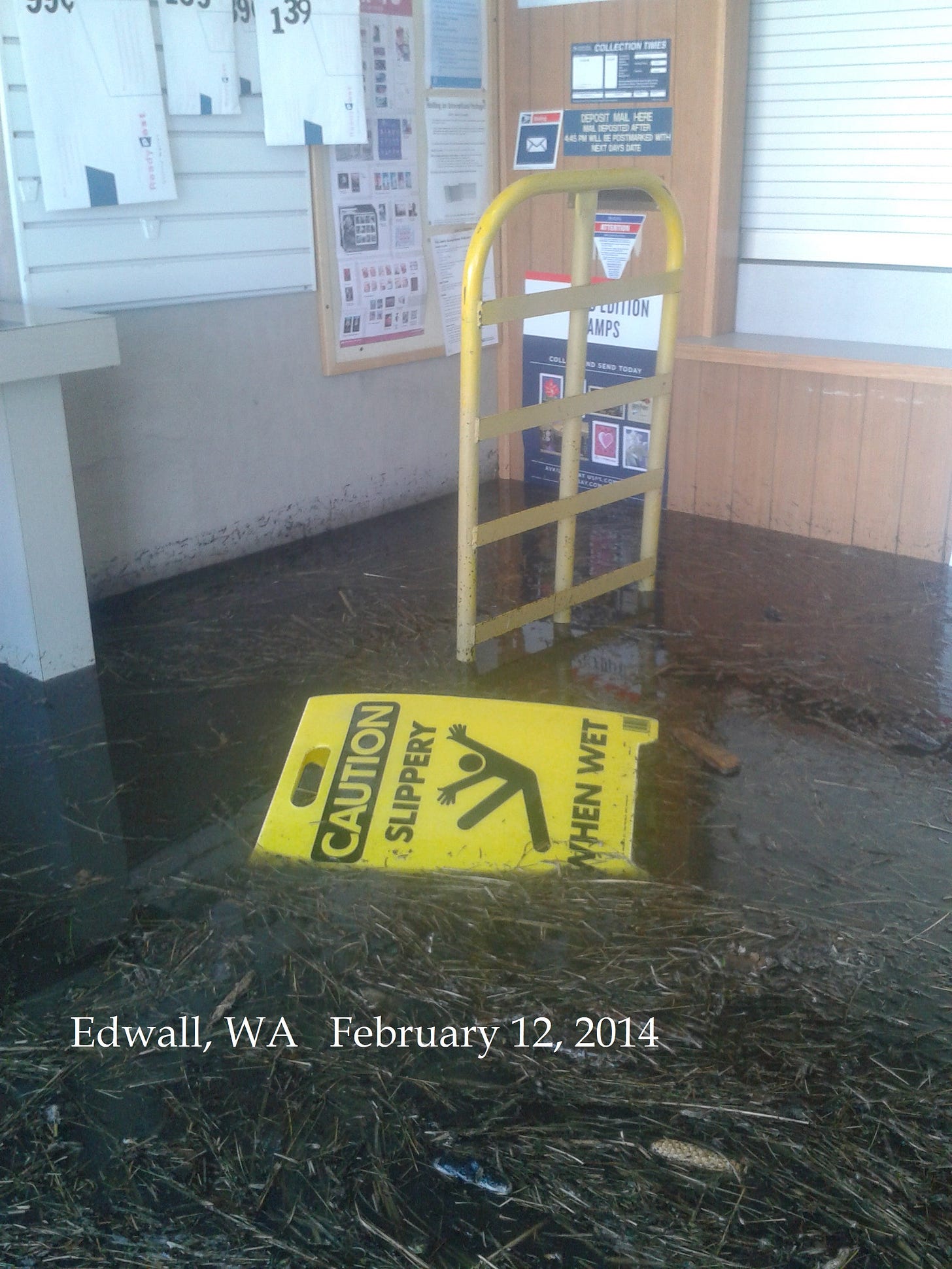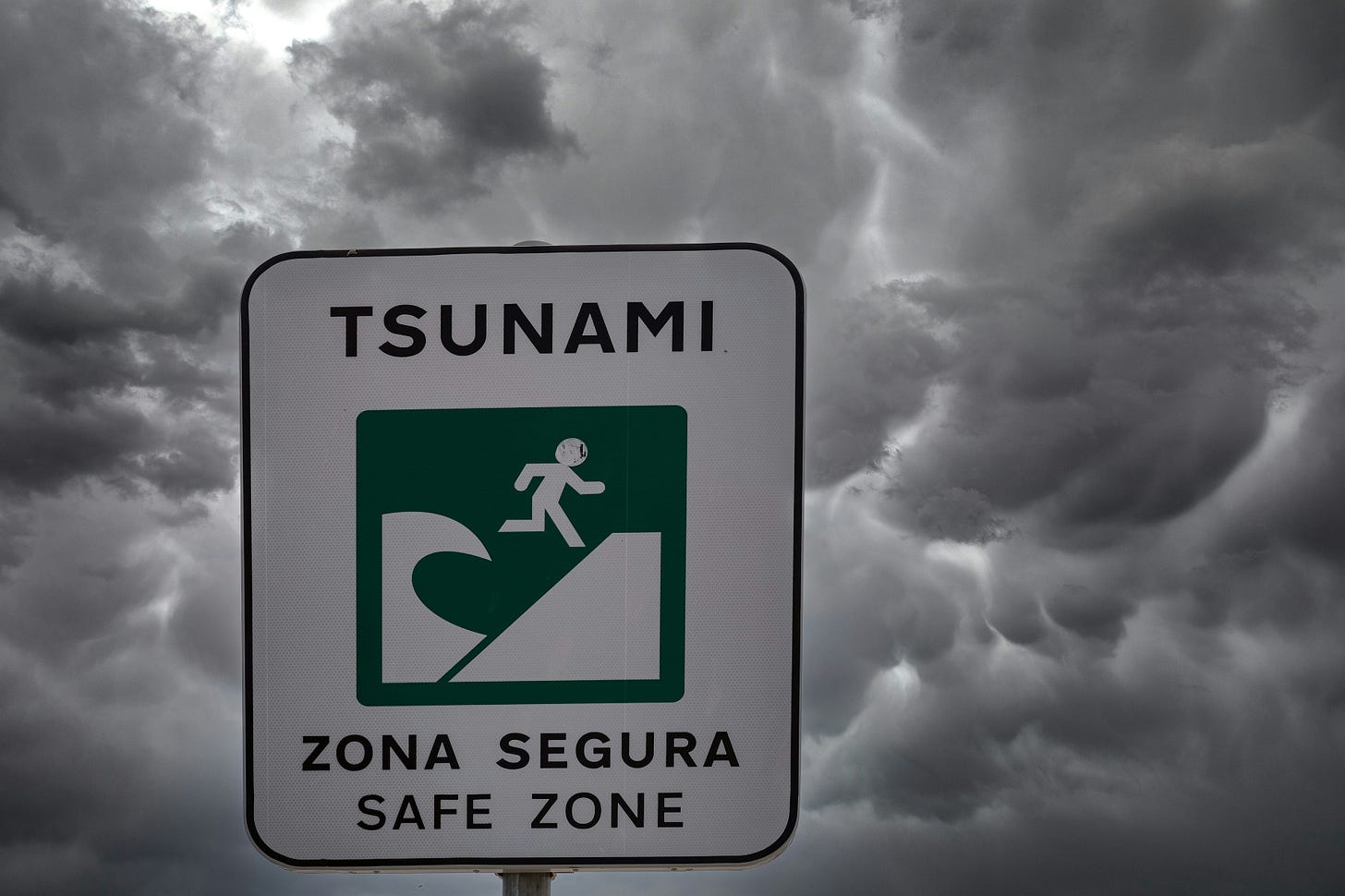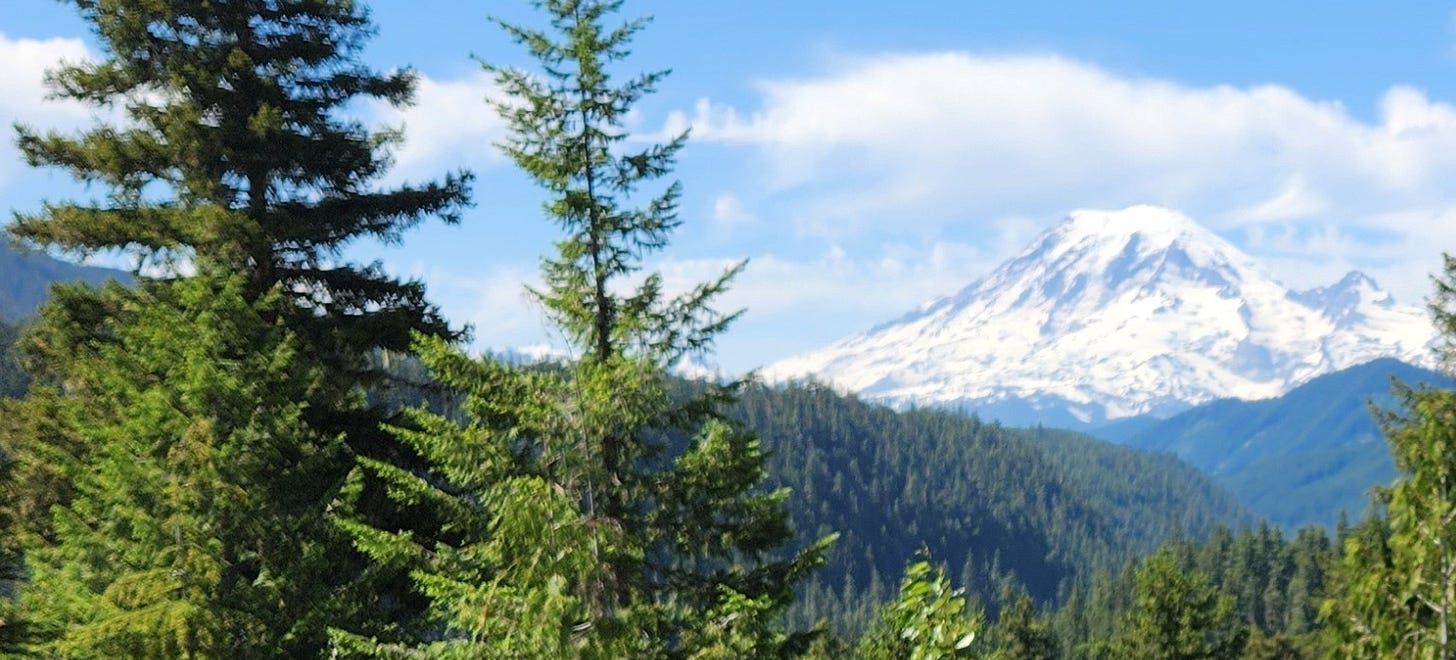Lessons from tragedy in Texas
Reclaiming the power of storytelling to face high risk/low frequency disasters
When the Guadalupe River rose over 25 feet in less than an hour, nothing like it had happened in Kerr County in almost 30 years. Volunteers in Texas are still seeking the missing, families are aching for closure, and the search for scapegoats is well underway. After-action reports will dig into warnings issued, technical glitches, mitigation steps taken (or not), and how to do better next time.
But reports get shelved and our memories are short. There needs to be a story, the kind repeated around a campfire to imprint on the next generation. Stories are an effective tool to prepare everyone from teenage camp counselors to emergency management professionals to make better, quicker decisions during high consequence low probability events.
Storytime: When a 9.1 magnitude earthquake in the Indian Ocean created a tsunami devastating communities in Asia and Africa, one community in Indonesia survived because they knew their story. Only seven people out of a population of 78,000 on Simeulue Island died while the death toll in Aceh Province as a whole was over 200,000. The Simeulueans had been retelling the story of a 1907 tsunami for nearly a hundred years. Academics call it “valuable indigenous knowledge.” For the Simeulueans, it was a lifesaver. On December 26, 2004 they knew what to do and headed for high ground.
Major floods on the Guadalupe River in Texas have happened infrequently, only seven times since 1936. The last significant flood was in 1997. As the memory of a flood recedes it becomes harder to imagine how bad it can get, even for professionals. There’s a momentary flash of “this can’t be real” as the mind freezes before fight or flight kicks in. The chart below is inspired by a training video for first responders on getting into the right mindset for reacting to what lecturer Gordon Graham calls high risk/low frequency events. (Video excerpt HERE )
When the risks are low, frequency matters less. For events happening with greater frequency, even for high risk events, our skills stay sharp. We know the story line and follow the script. High risk/low frequency events create greater decision-making challenges for individuals, communities and first responders. Training and practice create the storyline, like the real time wildfire evacuation drill in Spokane’s Grandview/Thorpe neighborhood (read my report as an observer HERE)
Storytime: Consider the members of any AARF (Aircraft Rescue Fire Fighting) organization. Its members must be ready to jump into action if an airplane crashes on the runway. The risks to the passengers, airline crew and first responders getting it wrong are consequential. Being ready for high risk/low frequency events takes dedication to training - and good stories from those who have been there, done that and have the scars to prove it to make it stick.
The best campfire stories need a bogeyman. Left-leaning headlines have cast climate change, Trump, DOGE and FEMA in the role. A pediatrician in Houston made it political in a social media post, saying “Kerr County MAGA voted to gut FEMA. They deny climate change. May they get what they voted for. Bless their hearts."
Tossing in a “bless their hearts” wasn’t enough to save her job. She was fired the next day.
Narratives from progressives like the now unemployed Houston doctor have attempted to blame voluntary retirements linked to DOGE, supposedly leading to understaffing and lack of warnings. Fact checkers have pointed out the local National Weather Service office had staffed up in the face of the storm with a team of five instead of the typical two on duty. All the usual warnings were sent out following all the usual protocols with all the usual forecasting models as the basis. One meteorologist reviewing their work suggested upgrading one of the models used, a technology issue. It seems the NWS forecasters did their jobs.
Technical glitches will always be with us. So will human nature. Most general flash flood warnings in the past 30 years have turned out to be inconvenient and not catastrophic. Residents reported tuning them out.
Storytime: Once upon a time there was a boy tending sheep who thought it would be funny to yell “Wolf! Wolf”! and see all the villagers drop what they were doing and come running. He did it several times, and laughed and laughed. And then a Wolf came and ate him. And the Boy Who Cried Wolf became a cautionary tale for false alarms and complacency.
Photo by Michael LaRosa on Unsplash
Left-leaning media called on experts supporting the climate change narrative, including Katherine Hayhoe, Chief Scientist for The Nature Conservancy. Hayhoe describes herself as a climate scientist and wrote in Time magazine “what used to be considered a 500-year flood has already happened multiple times in recent memory. The city of Houston experienced three such events from 2015 to 2017 alone.” But she was using the terms incorrectly. 500 years doesn’t mean only one every five centuries, it’s a 1 in 500 probability in any given year.
Storytime: Our little village of Edwall has had two once-in-a-lifetime floods in my lifetime, the first in 2014 and again in 2024. So what’s up? At a local meeting afterwards, we learned from the Department of Natural Resources how the terms “once-in-a-lifetime” or “hundred-year flood” are commonly misunderstood. A 100-year flood does not mean it will happen only once every 100 years. It means in any given year there is a 1 in 100 probability of a flood of a specific magnitude happening in a specific place. The odds of having two 100-year floods in ten years are way better than winning at Powerball. Houston hit the jackpot with three.
Photo by Sue Lani Madsen in muck boots
Climate alarmist Bill Nye - the science guy with a degree in mechanical engineering - confidently told CNN audiences we could reduce flooding if we “stopped burning fossil fuels,” even though he admitted no single weather event can be linked to a changing climate. Chris Martz, a heterodox meteorologist, pointed out flaws in Nye’s non-science-based argument in a lengthy rebuttal on the platform formerly known as Twitter. There is no increasing frequency of flooding according to USGS data, which indicates high river flows in the area have decreased since 1965 and especially in the last 25 years.
Data on a decreasing frequency of flooding set the context for Texas officials as well as for FEMA in deciding when and how much to spend on preparation and how and whether to update flood maps. Those are judgment calls based on available data and requires weighing competing priorities for scarce dollars.
Storytime: Kotoku Wamura served as mayor of Fudai, a small Japanese town north of Tokyo. He listened to the stories of elders who told of the record-setting 125 foot tsunami wave hitting the coast in 1896. He was 24 years old when a 94 foot high wave hit the village in 1933 and watched as bodies were dug out of the mud. His first project as mayor was building a protective sea wall. Then he insisted on making a tsunami gate a priority of government for the small town of 3,000 or so residents. It took over ten years to build the gate, completed in 1984. Mayor Wamura retired in 1987 and died in 1998, still being mocked for his boondoggle of a project.
Then in 2011 the fire department closed Mayor Wamura’s steel tsunami floodgate and saved the entire town of Fudai from the giant waves that killed nearly 20,000 people along the coast of Japan. Cost to the people of Fudai in 2011 dollars – $30 million, or about $10,000 per resident. For perspective, a similar sized city like Chewelah has a total General Fund budget of only $2.6 million in 2024 dollars. Mayor Wamura’s gravesite is now a shrine. Critics who had other ways to spend the money have faded from memory.
Photo by Markus Kammermann on Unsplash
Our future facing culture is different from Japan, where a high-level of reverence for elders influenced the mayor and probably his success in building the Fudai wall. Americans tend to see dwelling on the past as a weakness. Legislators pass a few recovery bills, might be a plaque somewhere dedicated to victims, and society moves on leaving individual survivors to cope with potentially paralyzing post-traumatic stress driven anxiety.
But sometimes post-traumatic stress leads to real change, like the determined Mayor Wamura’s response to the 1933 tsunami that saved his town 78 years later.
Storytime: After the Sutherland Canyon Fire raced across her ranch in 2017, one woman bought her own fire truck and channeled her stress into a push for better rangeland fire response. She used her story to make the case for better preparedness and a change in attitude for DNR responders more accustomed to timber fires. Stories bring data to life for public policy debates over priorities of government, but it takes perseverance and repetition like Mayor Wamura. Rangeland Fire Protection Associations have a long and successful history in Oregon and Idaho, the Washington legislature is finally tiptoeing through a pilot project. Maybe they’ll fully adopt RFPAs in the next session.
Besides wildfire and flooding, sitting on the “Ring of Fire” makes the Pacific Northwest vulnerable to a variety of high risk/low frequency events running on cycles measured in centuries.
The recent swarm of earthquakes around Mt. Ranier have caused an eruption of speculation. More likely than a Mt. Helens blast is a lahar, a mudflow of melted glacial snow and soil following the Puyallup and Carbon Rivers and covering the city of Orting. It’s been about 500 years since the last one, and scientists estimate the valley is somewhere in a 300 year window for another one. It could be tomorrow, it could be next century.
Orting takes it seriously. Preparation is physical, technical and social.
Emergency managers estimate residents would have about 42 minutes after notification to get to higher ground. Sophisticated monitors on the mountain will provide the first alert. Sirens are tested monthly. Once a year, the school practices a Lahar Evacuation Drill by walking to safety. Children learn the story of how quickly a lahar moves, and how quickly they need to move. A pedestrian bridge is being built to support rapid evacuation, assuming traffic jams. And the annual Lahar Day drill reinforces local community knowledge, like the Simeulueans and their story-telling tradition. When the sirens go off, Orting residents will know what to do and head for high ground.
Mt. Ranier from White Pass - June 10, 2025
Closing Storytime: Last week a fire took off in the canyons along the Spokane River in Lincoln County. As this is written on July 13, 2025 the Western Pines Fire is active and evacuation zones are in place. A level-headed friend received a Level 2 Evacuation notification and was surprised to find herself frozen, standing in the middle of her living room. A few deep breaths and she was able to kick into gear to face this high risk/low frequency event.
Are you ready for the next high risk/low frequency event in your world?
REFERENCES:
Oral history as a disaster prevention strategy in Indonesia:
https://kamome.humboldt.edu/sites/default/files/smong_eqspectra_0.pdf
“There will be another tsunami in this region, perhaps in our lifetime. The Mentawai Islands segment of the subduction zone last ruptured in 1833 and produced a 10-m-high tsunami in Padang, which now has a population twice as large as Banda Aceh and has the similar disposition of being built in a low-lying floodplain. When that event comes, we need to have instruments in place to help mitigate the disaster. These must include a combination of high-tech solutions such as the DART system alongside a decidedly lowtech, grassroots educational approach that passes down lessons learned from our generation to those that follow.”
The Center Square – Wildfire Evacuation Drill:
https://www.thecentersquare.com/washington/article_22294fbb-2968-47d1-b0ca-c35f4b3c3991.html
Gordon Graham on the challenge of decision making during High Risk Low Frequency events (short excerpt clipped by the ARFF Aircraft Rescue Fire Fighting organization):
Houston pediatrician fired:
https://www.statesman.com/story/news/state/2025/07/08/houston-pediatrician-christina-propst-fired-comments-about-texas-flood-victims-kerrville/84504911007/
Katherine Hayhoe in Time magazine:
https://time.com/7301528/climate-scientist-in-texas-floods/
Bill Nye (Mechanical Engineer) vs Chris Martz (Meteorologist):
https://x.com/ChrisMartzWX/status/1944023032202219576
https://x.com/ChrisMartzWX/status/1943159876672159807
USGS Data on Guadalupe River:
https://waterdata.usgs.gov/monitoring-location/USGS-08165500/#dataTypeId=daily-00060-0&period=periodOfRecord
Japanese village saved by tsunami wall:
https://www.zmescience.com/science/history-articles/the-japanese-mayor-who-built-a-floodgate-no-one-wanted-and-saved-his-town/
Rancher advocates for better fire response:
https://www.nwnewsnetwork.org/environment-and-planning/2019-09-09/washington-ranchers-push-to-create-fire-fighting-teams-in-no-mans-lands
City of Orting Public Safety:
https://www.cityoforting.org/public-safety/emergency-management/emergency-preparedness







Well written...good advice.